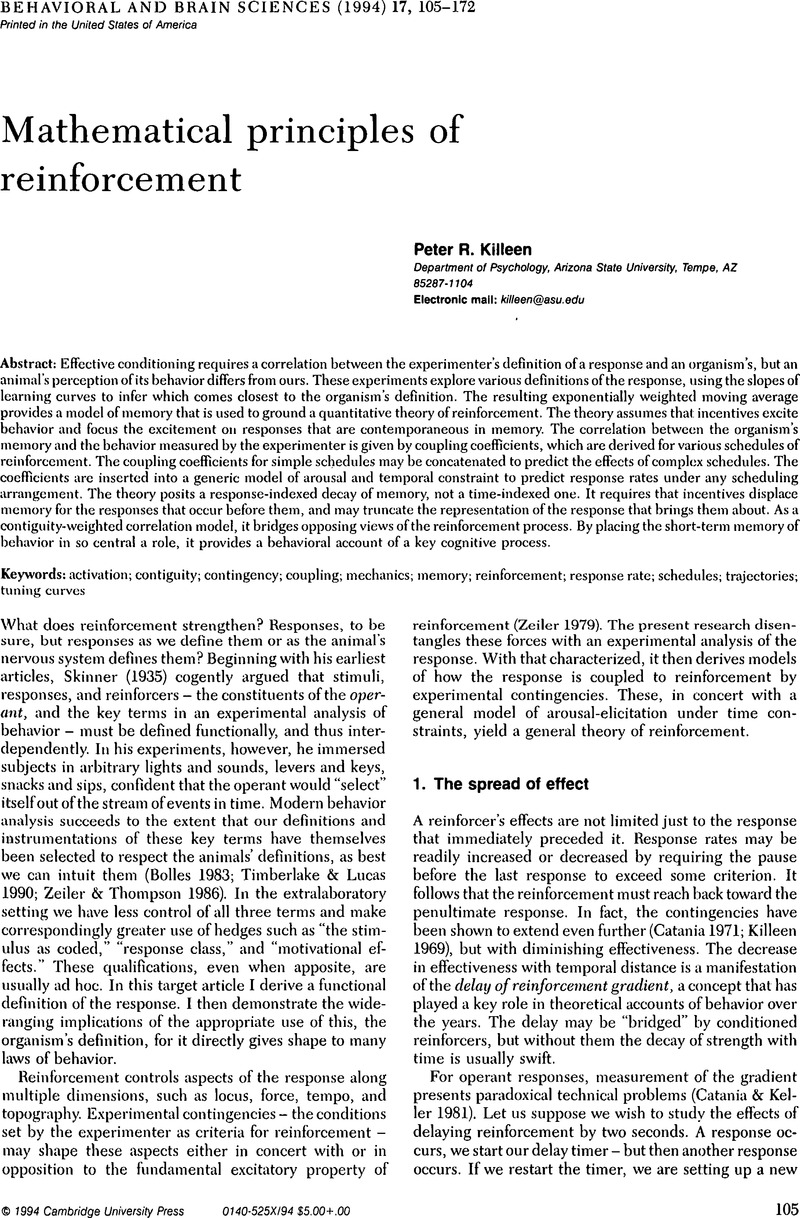Crossref Citations
This article has been cited by the following publications. This list is generated based on data provided by Crossref.
Killeen, Peter R.
and
Hall, Scott S.
2001.
THE PRINCIPAL COMPONENTS OF RESPONSE STRENGTH.
Journal of the Experimental Analysis of Behavior,
Vol. 75,
Issue. 2,
p.
111.
Killeen, Peter R.
and
Sitomer, Matthew T.
2003.
MPR.
Behavioural Processes,
Vol. 62,
Issue. 1-3,
p.
49.



